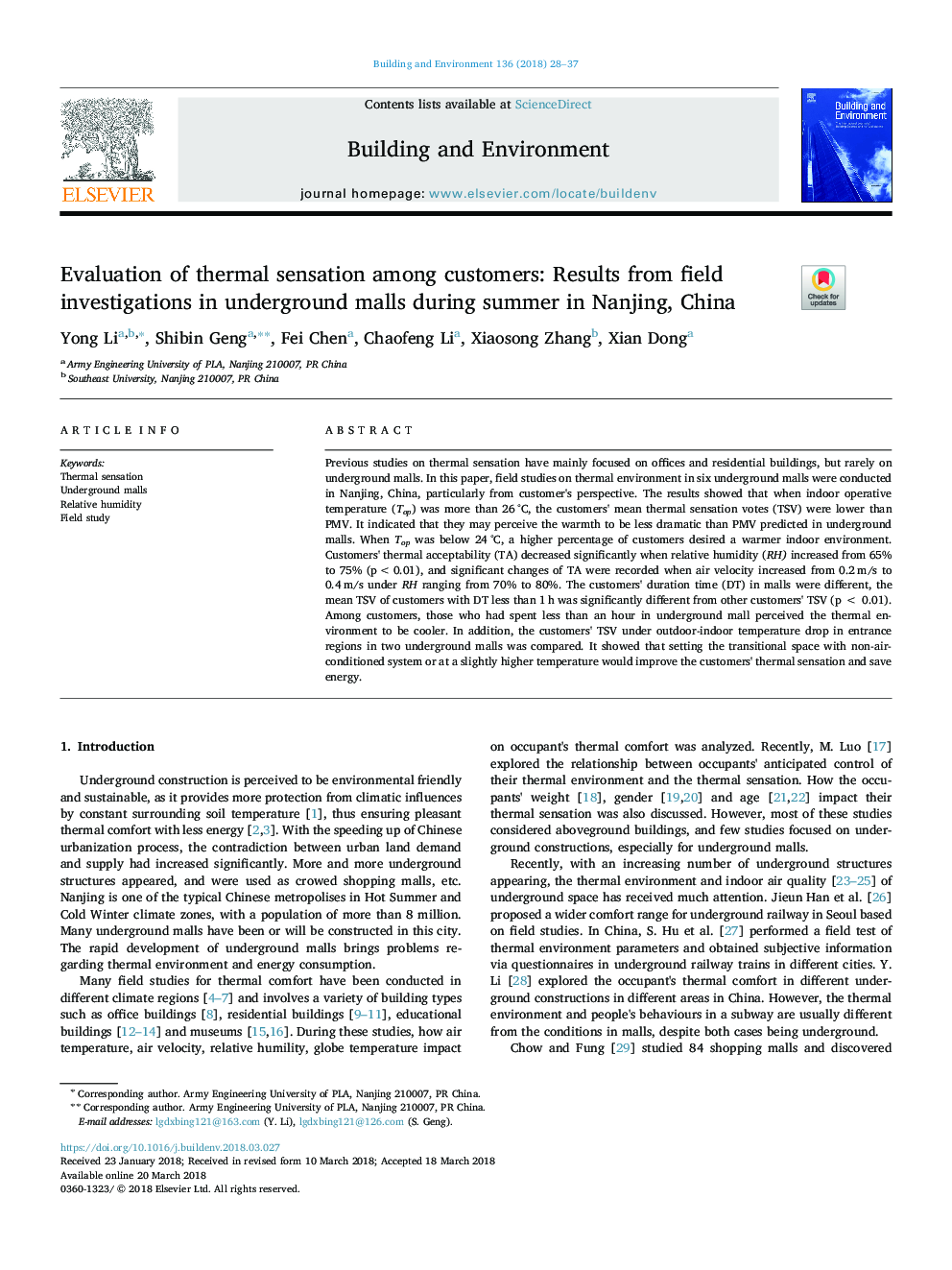| Article ID | Journal | Published Year | Pages | File Type |
|---|---|---|---|---|
| 6697421 | Building and Environment | 2018 | 10 Pages |
Abstract
Previous studies on thermal sensation have mainly focused on offices and residential buildings, but rarely on underground malls. In this paper, field studies on thermal environment in six underground malls were conducted in Nanjing, China, particularly from customer's perspective. The results showed that when indoor operative temperature (Top) was more than 26â¯Â°C, the customers' mean thermal sensation votes (TSV) were lower than PMV. It indicated that they may perceive the warmth to be less dramatic than PMV predicted in underground malls. When Top was below 24â¯Â°C, a higher percentage of customers desired a warmer indoor environment. Customers' thermal acceptability (TA) decreased significantly when relative humidity (RH) increased from 65% to 75% (p<0.01), and significant changes of TA were recorded when air velocity increased from 0.2â¯m/s to 0.4â¯m/s under RH ranging from 70% to 80%. The customers' duration time (DT) in malls were different, the mean TSV of customers with DT less than 1â¯h was significantly different from other customers' TSV (pâ¯<â¯0.01). Among customers, those who had spent less than an hour in underground mall perceived the thermal environment to be cooler. In addition, the customers' TSV under outdoor-indoor temperature drop in entrance regions in two underground malls was compared. It showed that setting the transitional space with non-air-conditioned system or at a slightly higher temperature would improve the customers' thermal sensation and save energy.
Related Topics
Physical Sciences and Engineering
Energy
Renewable Energy, Sustainability and the Environment
Authors
Yong Li, Shibin Geng, Fei Chen, Chaofeng Li, Xiaosong Zhang, Xian Dong,
